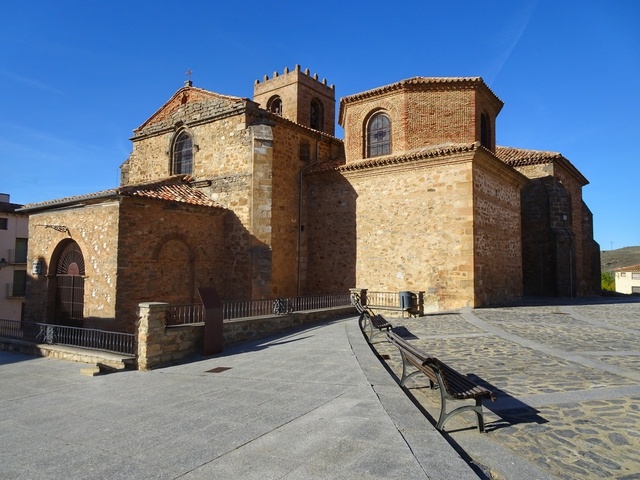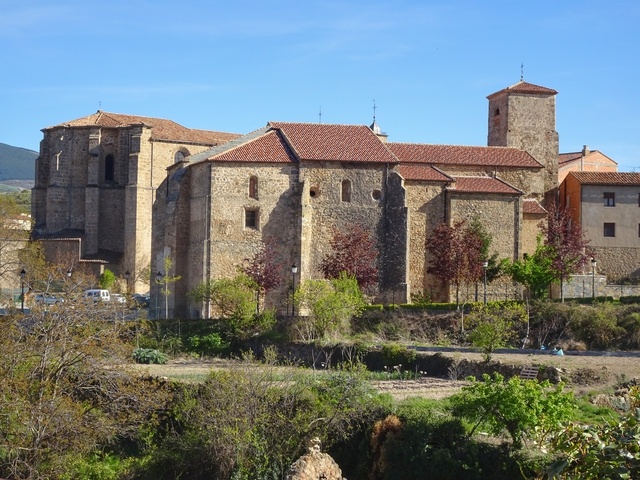Gallur – Borja
03 May 2019
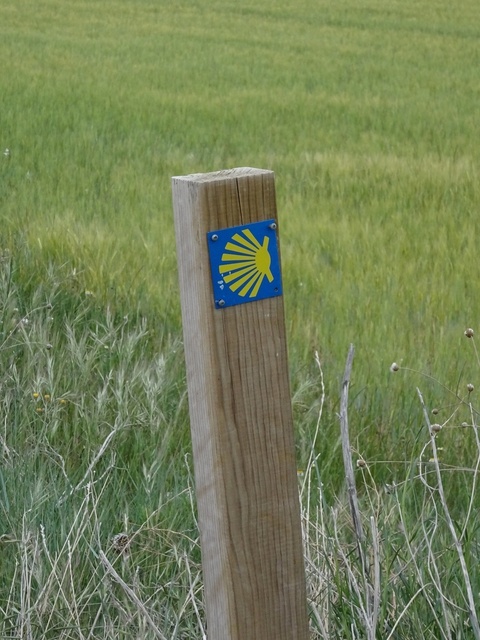
After 5 days off in and around Zaragoza, we were ready to start walking again.
In 2012 we walked from Zaragoza to Gallur on the Camino Catalan/Ebro so this time we went by train. The Camino Castellano-Aragones, forgotten for centuries has been re-established by Soriana Association of Friends of the Camino de Santiago. It runs 239 km from Gallur to eventually join the Camino Frances. We will only do 3 days of it.
Click here for Camino Castellano-Aragones map.
We left Gallur at dawn on an overcast day with a strong cold wind blowing from the Moncayo Mountains. Then it started raining. Then we hit the mud, the heavy mud that sticks to your shoes and makes evey step an effort. The walk though is nice enough on farm roads through the fields, no cars, no people. 24.5 km, 5 hours 20 minutes.
Borja was just beginning the festivities in honor of Nuestra Señora de la Peana starting with the “Encierro de Reses Bravas” where wild cattle are let loose in the plaza to chase young men. Nobody was injured and no cattle killed.
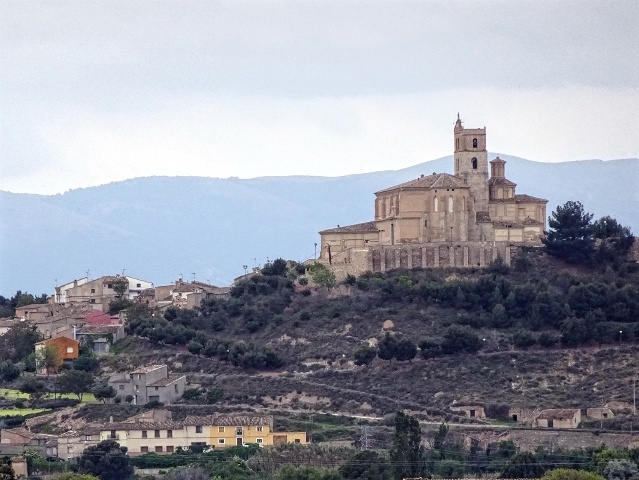
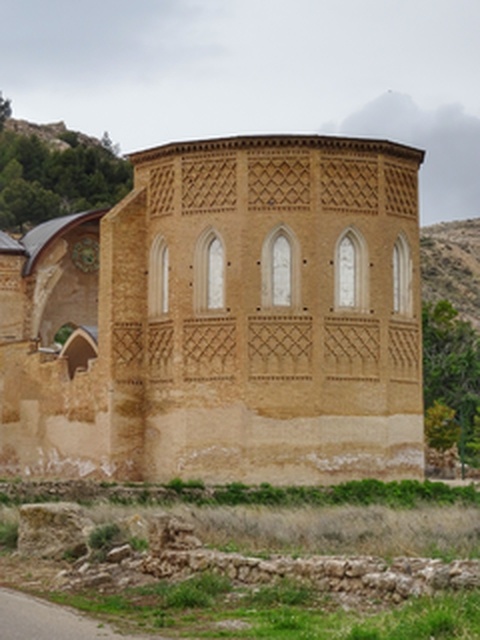
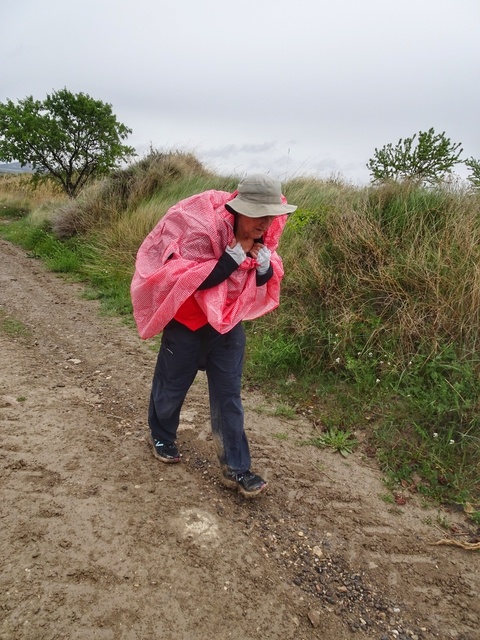
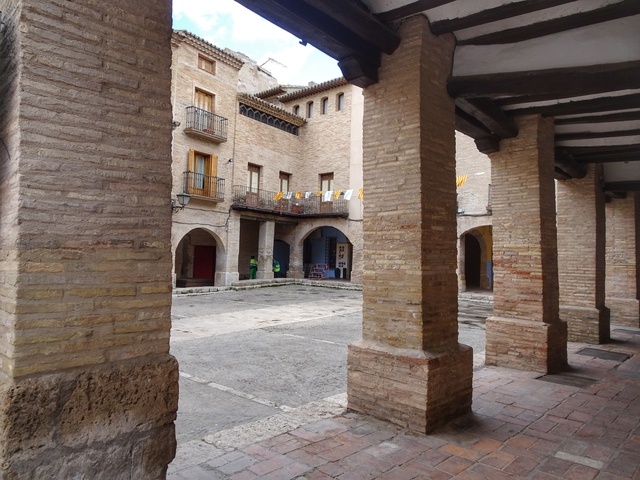
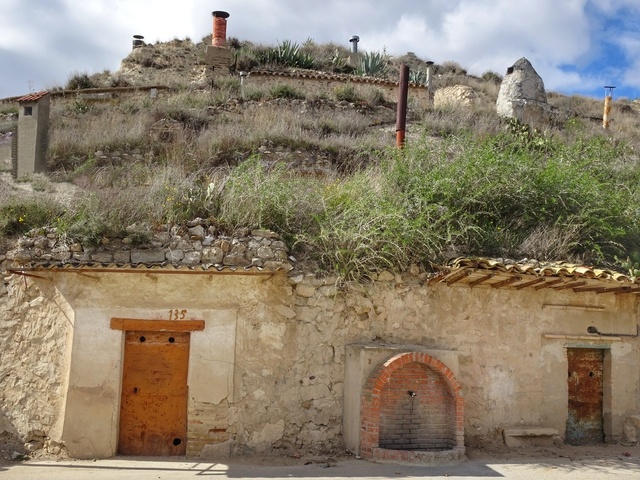
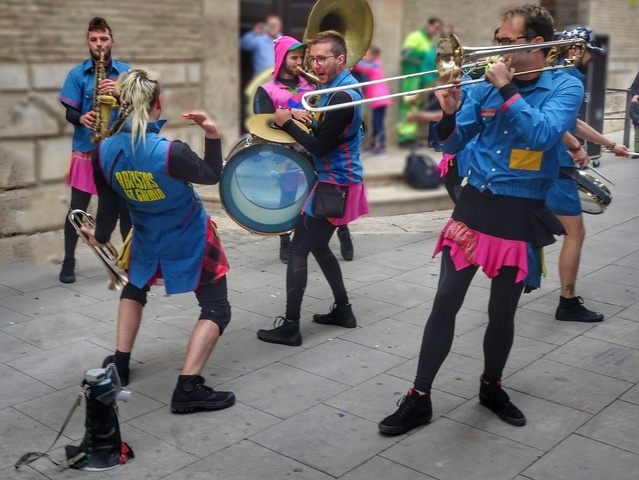
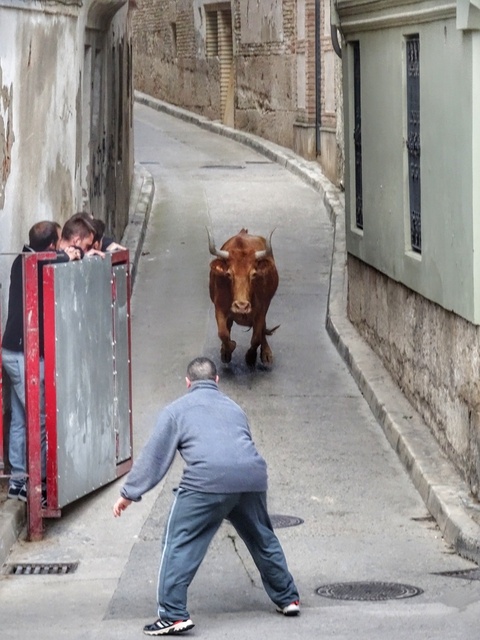
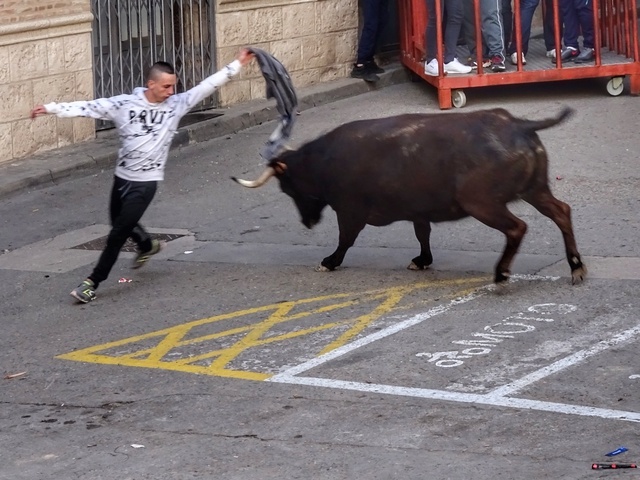

In 2012 an 81 year old parishioner “restored” the Ecce Homo fresco damaged by humidity in the Misericordia Sanctuary near Borja. News spread online of a “botched restoration”. Now over 45,000 visitors from 110 countries have seen it, raising more than €100,000 for local charities
Santuario de Misericordia to Tarazona
04 May 2019
From Borja to Tarazona is 27.5 km but we cut it short by taking a taxi back up to the Santuario de Misericordia so 23.5 km in 5 hours 20 minutes. A fine day, clear skies and sunny but facing strong cold winds all the way.
The way was an easy, fast and deserted gravel road to El Buste, about half way. From then on the path gradually became a barely-visible rough track up and over a remote hillside until a few kms from Tarazona. Just about had enough when a man in a car stopped and gave Pam a most beautiful red rose from his garden!
Tarazona is an old city of narrow streets, surprises around every corner; a very nice place wander around.
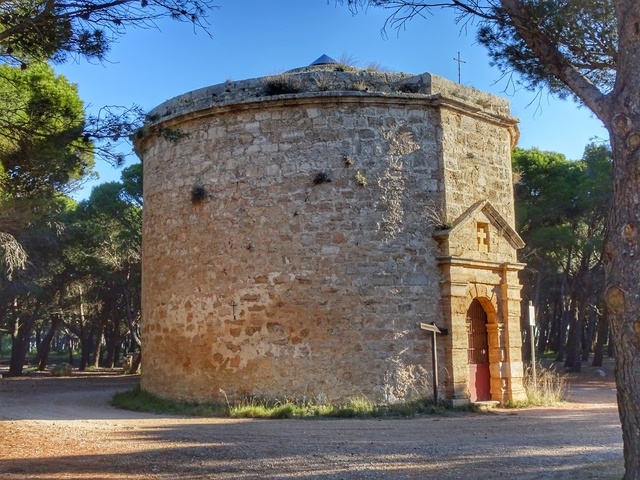
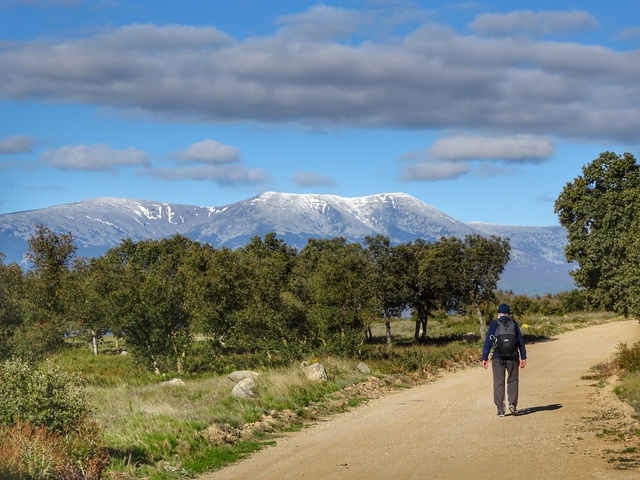
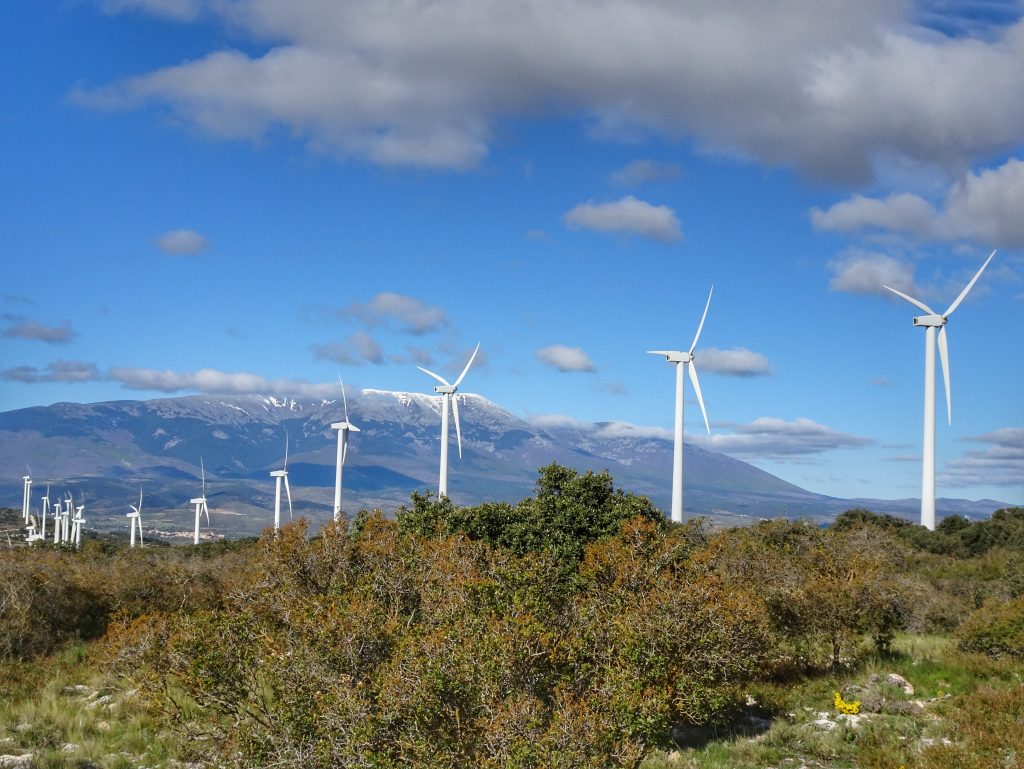
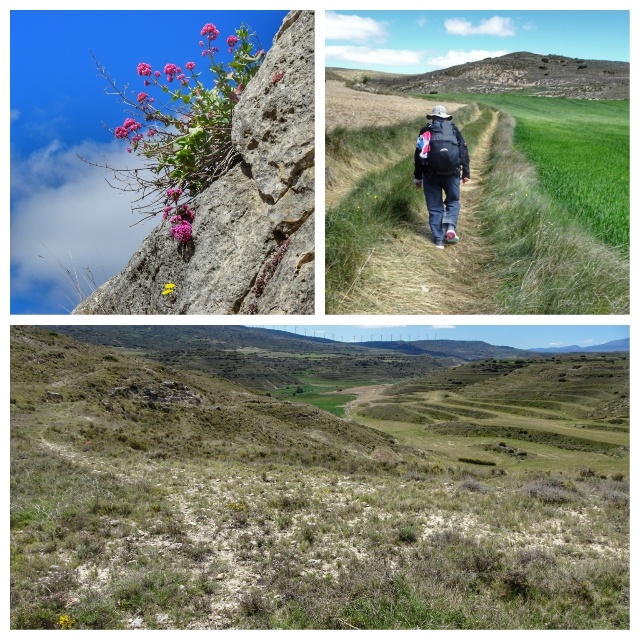
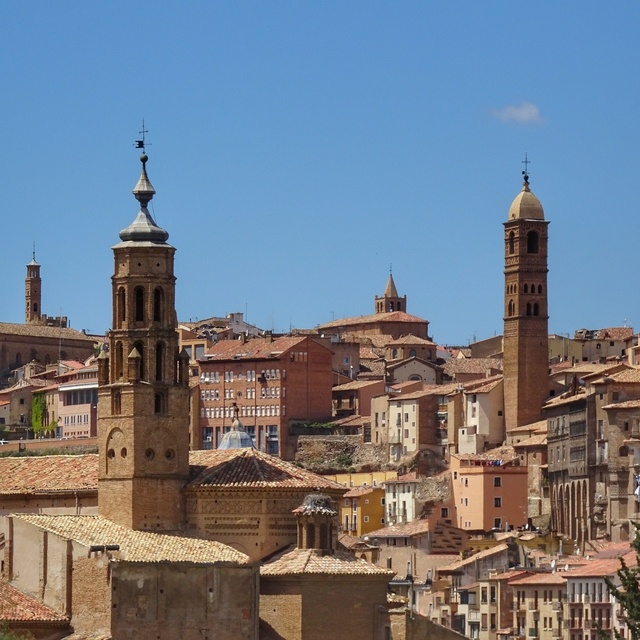
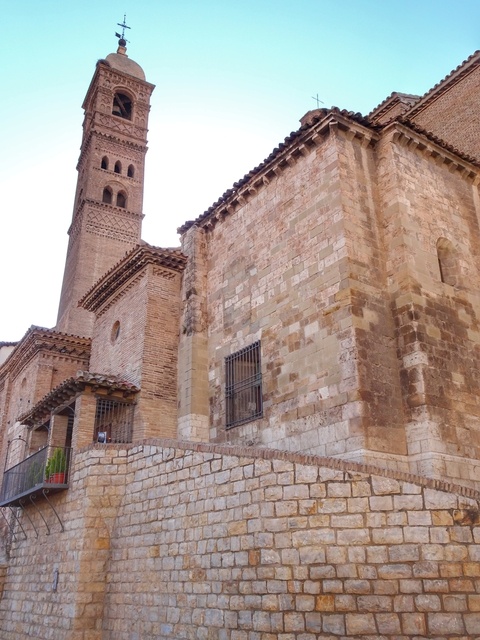
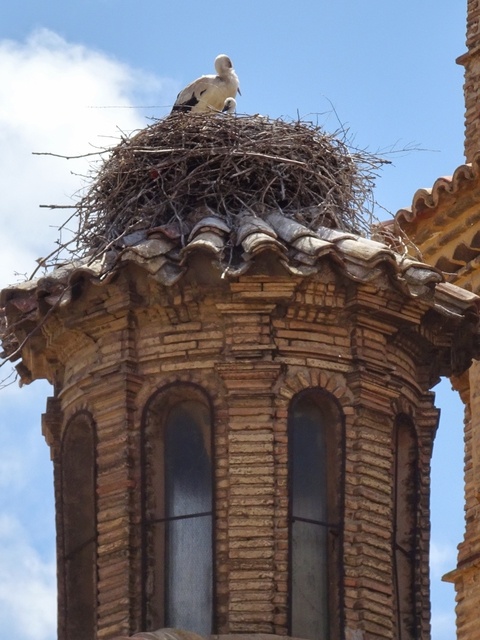
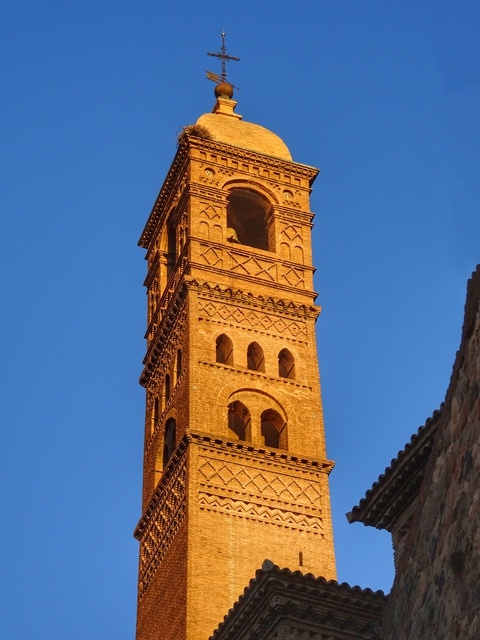
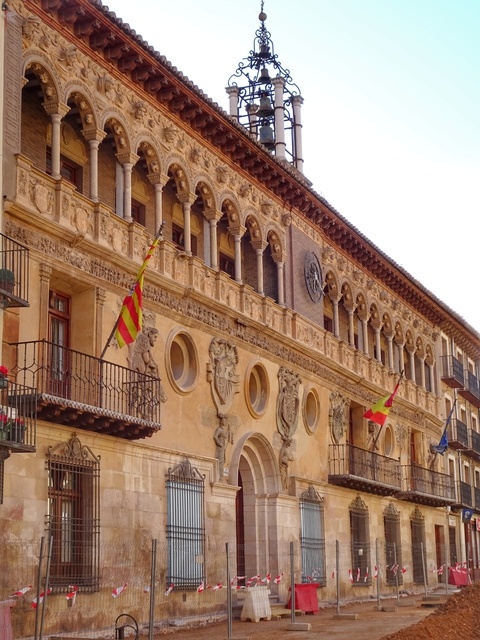
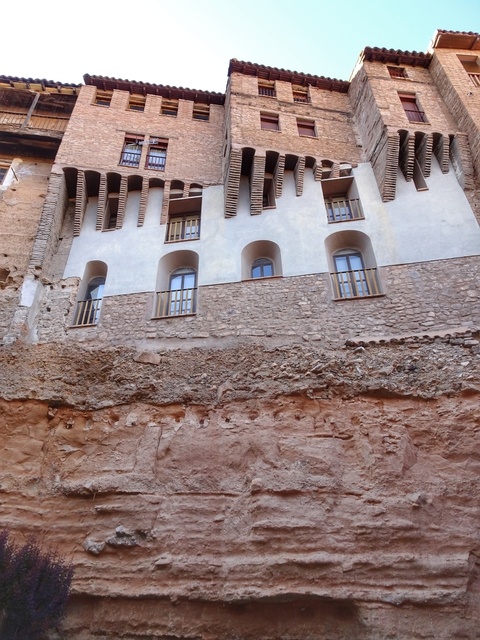
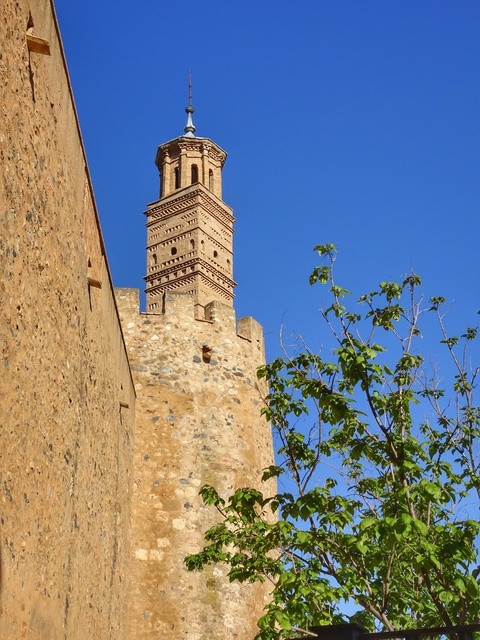
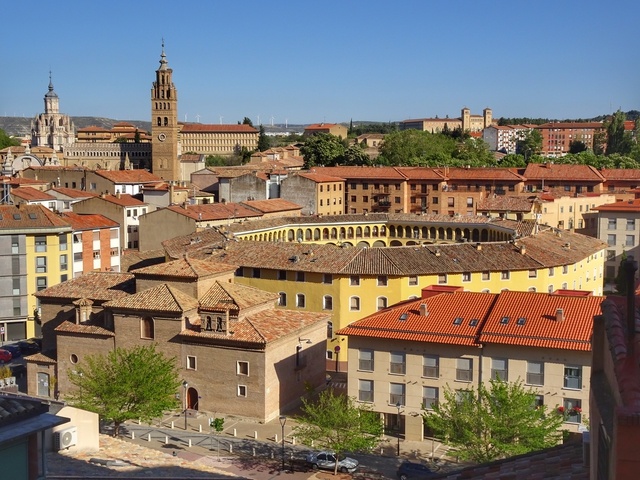
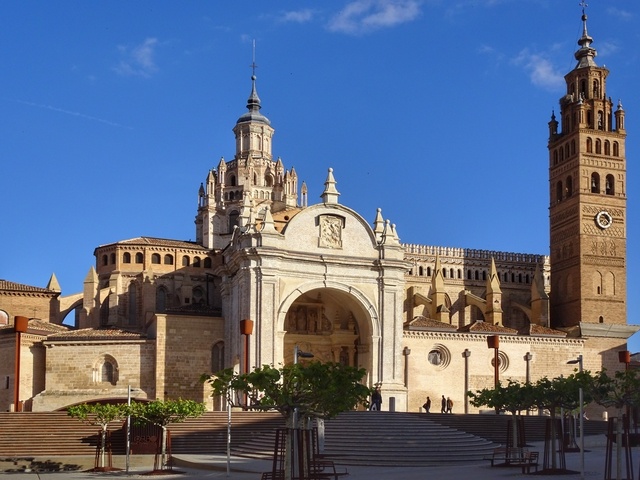
Tarazona to Agreda
05 May 2019
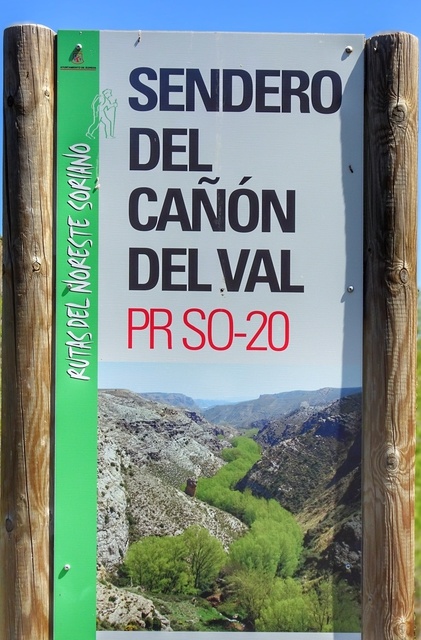
A great days walking – out of Tarazona following a small stream, birds singing to Los Fayos. Then along the Val Reservoir and up the Val River Canyon. The Canyon hike was impossibly beautiful and the highlight of our trip.
One of the great things about walking not driving – the path up to Agreda passed by the 8th century Arab Gardens to enter through the 10th century Arab Arch. Agreda is known as “Villa de las Tres Culturas” (Town of the Three Cultures) and traces of Muslim, Jewish and Christian civilizations remain.
The 24 kms took 6 hours but today time passed quickly in fine sunny weather and a light breeze.
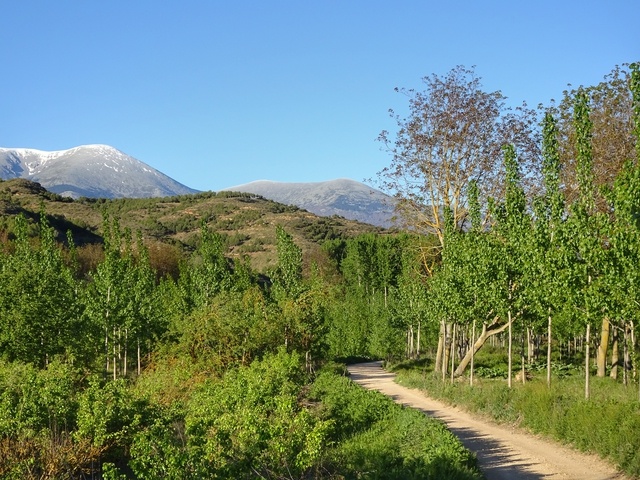
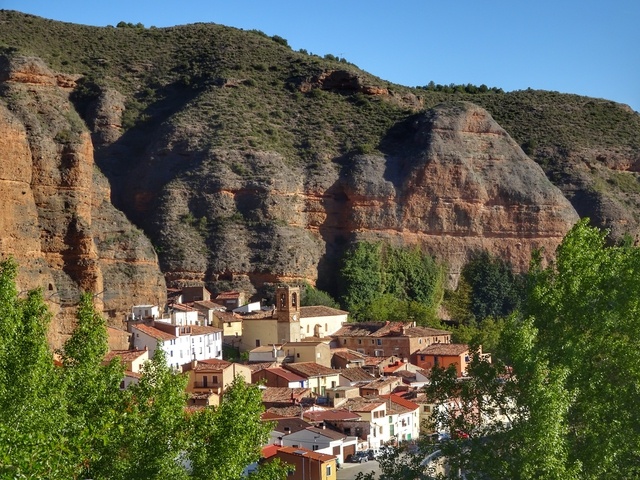
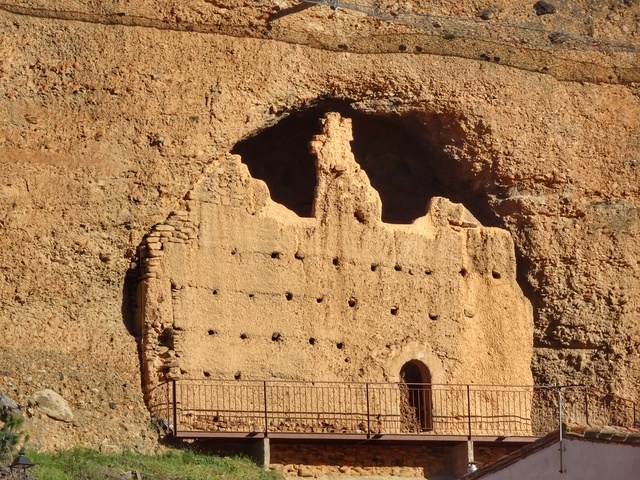
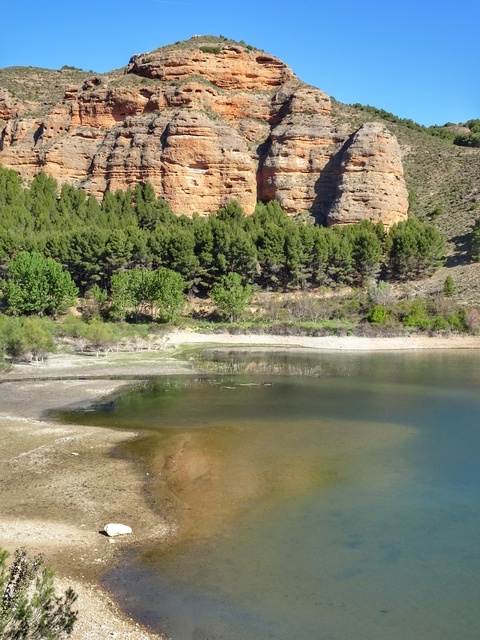
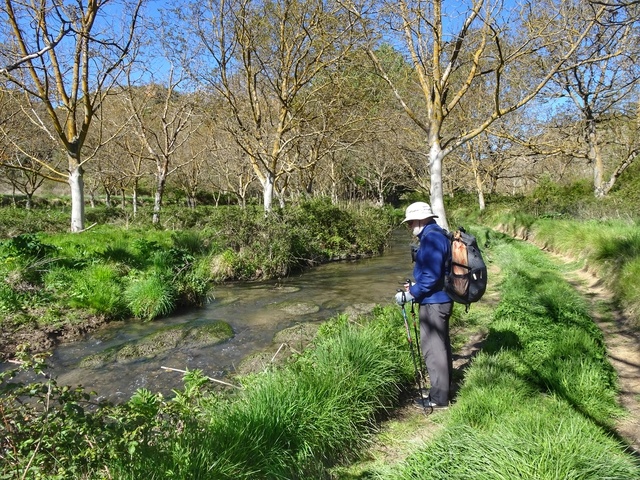
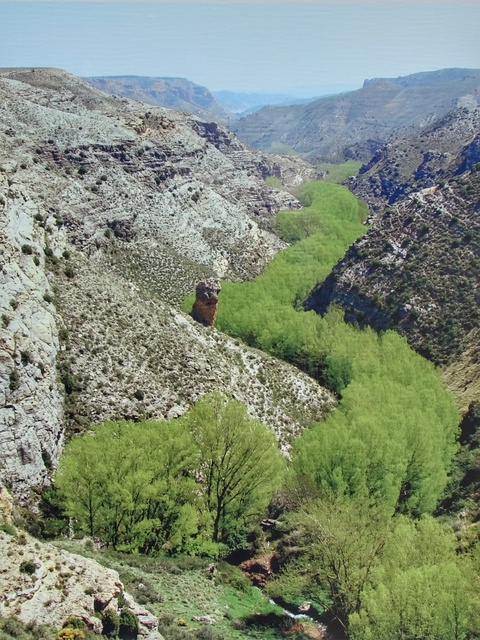
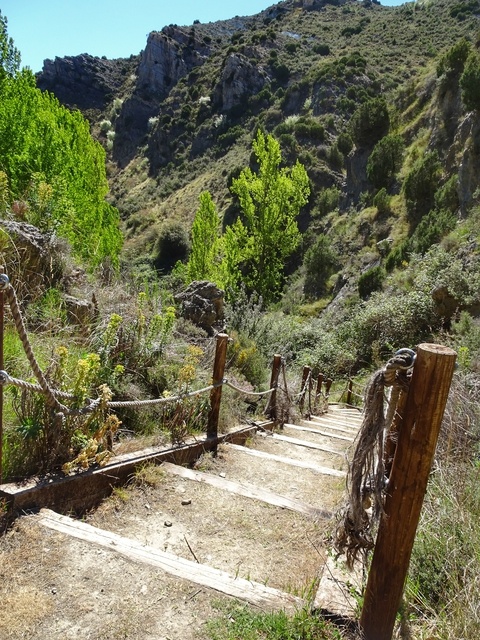
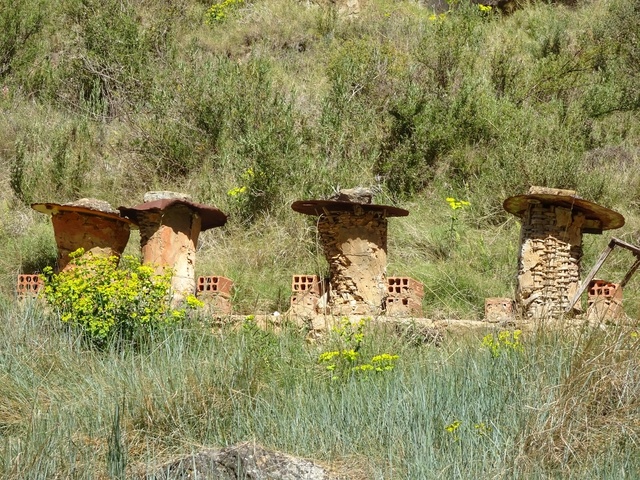
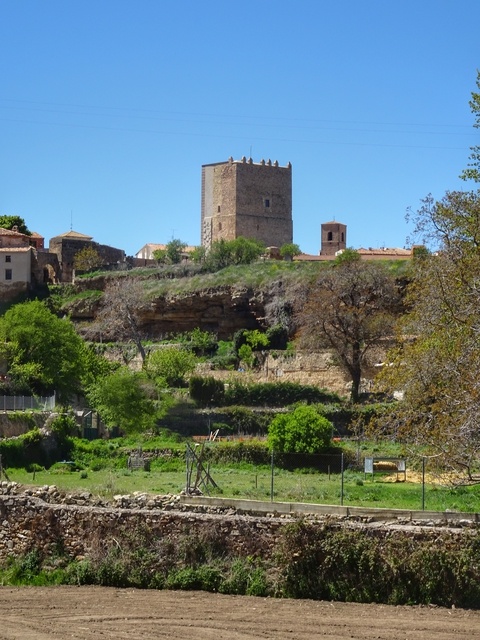
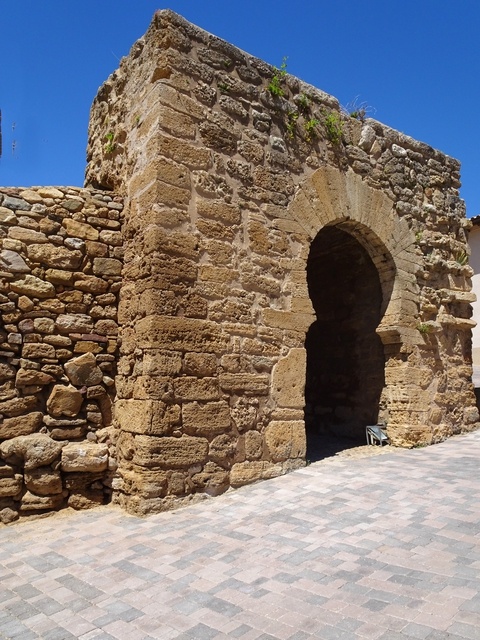
Moors lived in Agreda from 719 until the expulsion of 1610
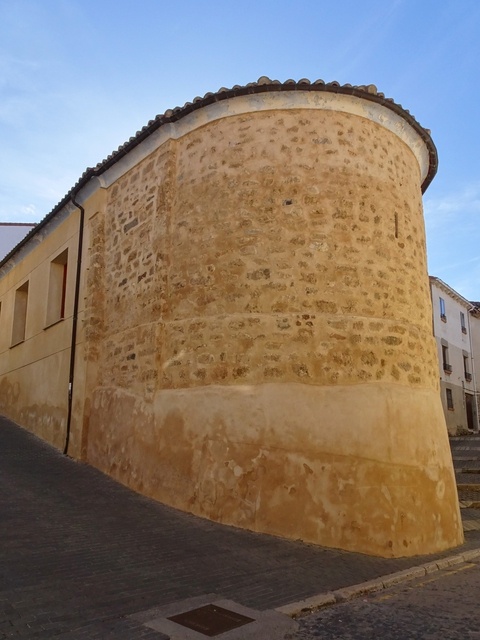
It now houses an excellent restaurant where we enjoyed a 5 course lunch
